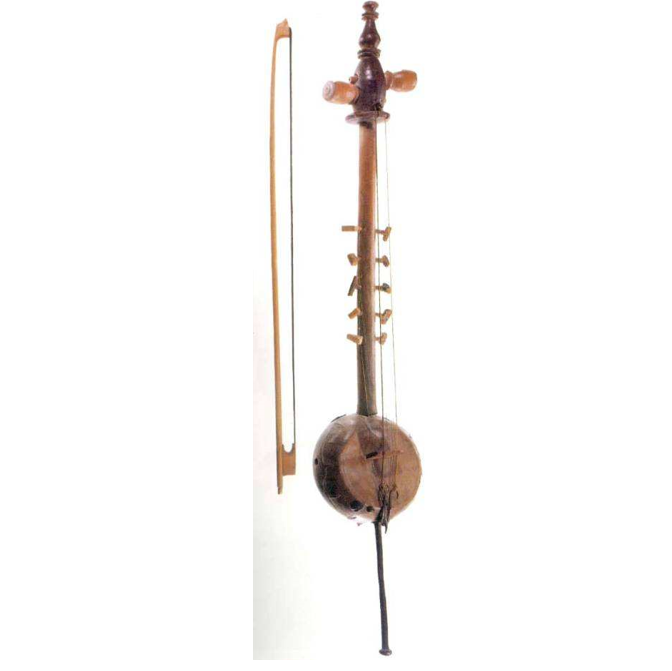Doran Aijk's Playing Methods and Famous Songs
Dolang Aijek is the main stringed instrument in the folk bands of the Dolang area. It often plays together with Uyghur instruments such as Kalong, Dolang Rewap and Dabu. The accompaniment of "Daolang Muqam", "Maxilaip" and the folk song and dance "Dorang Sai Naim" is one of the musical instruments that is deeply loved by the Uyghur people.

When playing, take a seated position, stand the bottom of the piano on the left leg, or sandwich the piano box between the two legs, hold the piano in the left hand to press the strings, hold the ponytail bow in the right hand and dipped in rosin to play outside the main strings. The strings resonate to increase the volume. The piano bar is made of apricot wood or walnut wood, thick at the top and thin at the bottom, with a total length of 80 cm.
At the earliest, a ponytail was used as the main string, and the tuning was c1. There are eight steel wire resonance strings on both sides of the middle of the piano bar, with pitch g, c1, d1, e1, g1, a1, b1, d2, and range c1-c3. There are two octaves.
Sanxian Duolang Aijie, the main strings are tuned according to the fourth relationship: d1, g1, c2, and the ten steel wire resonance strings are tuned as: c, d, e, g, a, c1, d1, e1, g1, a1. The sound range d1-d3 has two octaves.
The sound is soft and rich. Can be used for solo, instrumental ensemble or to accompany folk song and dance.
Famous solo pieces include "Ushak Muqam 1st Dastan Merhuri", "Jun Haza" and so on.
 渝公网安备 50010702504639号
渝公网安备 50010702504639号